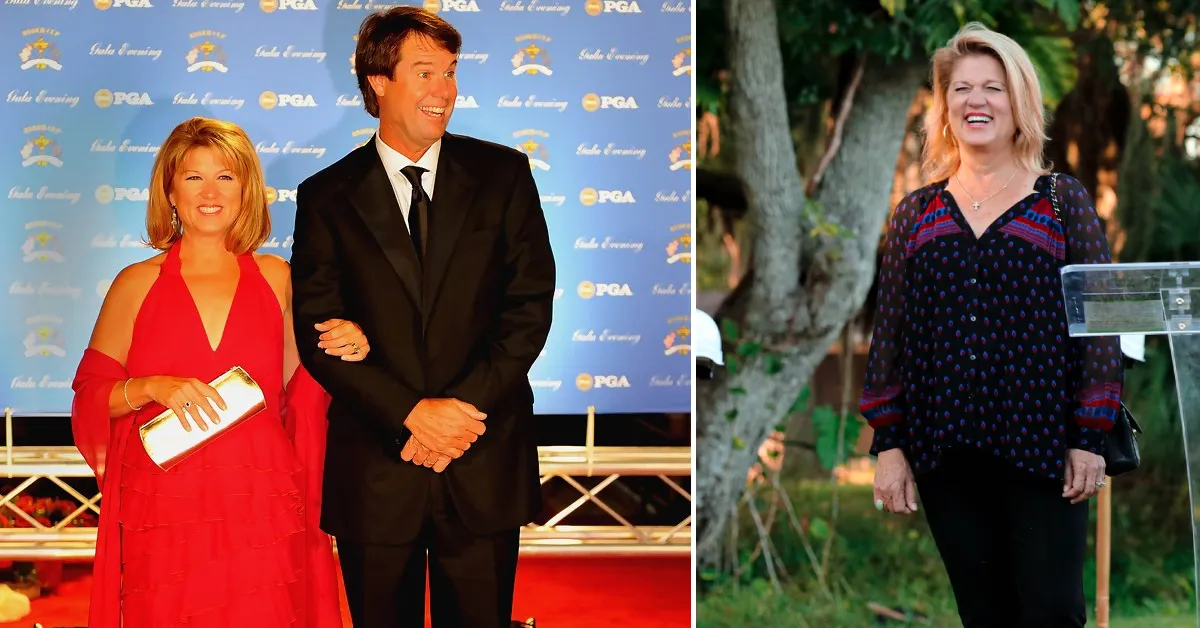Paul Azinger sits comfortably with an estimated net worth between $20 million and $25 million in 2025. This wealth comes from decades of success both on the golf course and behind the microphone as one of golf’s most respected TV analysts. The Florida native built his fortune through PGA Tour prize money, lucrative broadcasting contracts, smart investments, and various endorsement deals that continue paying dividends today.
Paul Azinger Net Worth
Paul Azinger’s financial portfolio reflects a career that spans multiple income streams. Current estimates place his net worth around $22 million, though some sources suggest it could reach as high as $25 million. This range accounts for his diverse earnings from professional golf, television work, book sales, and personal investments.
The golfer turned broadcaster has maintained steady wealth growth since his playing days ended. While his PGA Tour career earnings topped $14 million in official prize money, his post-golf career has proven equally profitable. Broadcasting contracts with major networks like ESPN, ABC, and NBC have provided consistent six-figure annual salaries for nearly two decades.
Real estate holdings contribute significantly to Azinger’s asset value. His primary residence in Bradenton, Florida, sits on prime waterfront property worth several million dollars. The home features a private dock and golf practice area, reflecting both his lifestyle preferences and smart property investment choices.
Professional Golfer & Golf Analyst
Azinger’s career took two distinct paths that both contributed to his wealth accumulation. His playing career spanned from 1981 to 2010, during which he captured 12 PGA Tour victories and earned millions in prize money. His transition to broadcasting began in the early 2000s and has become his primary income source.
As a television analyst, Azinger brings authentic expertise that networks value highly. His broadcasting career started with ESPN and ABC before moving to Fox Sports and later NBC. Each network change typically came with improved contract terms, reflecting his growing reputation as an insightful commentator who connects well with viewers.
The dual nature of his career created multiple revenue streams that continue generating income. Golf course design consulting, corporate speaking engagements, and golf instruction add to his yearly earnings. These activities leverage his reputation and expertise while requiring minimal time investment compared to his broadcasting commitments.
Career Highlights & Achievements
The 1993 PGA Championship victory at Inverness Club stands as Azinger’s career-defining moment. This major championship win came during his battle with lymphoma, making it one of golf’s most inspiring comeback stories. The victory earned him $280,000 in prize money, but its value extended far beyond the check.
That major win opened doors to endorsement deals and elevated his profile within the golf world. Companies wanted to associate with his inspiring story of overcoming cancer to win golf’s biggest prizes. The endorsement income from that period contributed significantly to his early wealth building.
His role as the 2008 U.S. Ryder Cup captain added another prestigious line to his resume. Leading the American team to victory at Valhalla Golf Club enhanced his reputation and led to increased speaking fees and consulting opportunities. Captain’s duties also came with compensation from the PGA of America.
Beyond individual achievements, Azinger’s consistent performance throughout the 1980s and 1990s generated steady prize money. His 12 PGA Tour wins, combined with numerous top-10 finishes, created a reliable income foundation during his prime playing years.
Sources of Income & Earnings Breakdown
Prize money represents just one piece of Azinger’s wealth puzzle. His official PGA Tour earnings exceed $14 million, but this figure doesn’t include international tournaments, team competitions, or unofficial events that also provided income during his playing career.
Broadcasting contracts form the backbone of his current earnings. Television analysts at Azinger’s level typically earn between $500,000 and $1 million annually, depending on their schedule and network prominence. His long-term contracts with major networks have provided financial stability for over 15 years.
Book royalties contribute a modest but steady income. “Zinger” and “Cracking the Code” continue selling to golf fans interested in his personal story and strategic insights. While book sales rarely generate massive wealth for athletes, they provide ongoing passive income and help maintain their public profile.
Endorsement deals during his playing career included equipment manufacturers and apparel companies. Though these contracts were smaller than what today’s top players receive, they added meaningful income during his peak years. Some relationships continued into his broadcasting career, providing additional compensation.
Corporate speaking engagements command premium fees due to his inspiring cancer survival story and major championship victory. Business conferences and golf events regularly book Azinger for motivational presentations, with fees typically ranging from $15,000 to $40,000 per appearance.
Wealth Growth Timeline
Azinger’s financial journey shows steady growth across multiple decades. His early career in the 1980s established the foundation, with breakthrough wins generating his first significant prize money. The late 1980s saw his net worth climb into the low millions as tournament victories became more frequent.
The 1990s marked his peak earning period as a player. The PGA Championship victory in 1993, combined with consistent high finishes, pushed his career earnings past $10 million. This decade also brought his highest endorsement income as companies capitalized on his inspiring comeback story.
The 2000s transition to broadcasting created a new income stream that has proven more stable than tournament golf. Television contracts provided guaranteed annual income regardless of performance, allowing for better financial planning and investment strategies.
Recent years have seen continued wealth growth through smart investments and property appreciation. His Florida real estate holdings have benefited from the state’s robust property market, while diversified investments have provided steady returns during his broadcasting career.
Assets & Investments
Real estate forms a major component of Azinger’s asset portfolio. His Bradenton, Florida home sits on valuable waterfront property that has appreciated significantly since purchase. The property includes a boat dock and custom golf practice area, combining lifestyle enjoyment with investment value.
Investment portfolios typically include a mix of stocks, bonds, and mutual funds for athletes of Azinger’s generation. While specific holdings remain private, financial advisors generally recommend diversified approaches for retired athletes with ongoing income from broadcasting or business ventures.
Vehicle collections often reflect personal interests for wealthy athletes. Golf professionals frequently own boats for fishing and recreation, which aligns with Azinger’s Florida lifestyle and waterfront property. These assets provide enjoyment while maintaining some resale value.
Golf memorabilia and collectibles represent both personal significance and potential investment value. Items from his major championship victory and Ryder Cup captaincy hold substantial worth to collectors, though most athletes keep such pieces for sentimental reasons rather than financial ones.
Lifestyle Insights
Azinger maintains a relatively modest lifestyle compared to many wealthy athletes. His Florida residence reflects comfort and quality rather than ostentatious display. The waterfront location provides privacy and recreational opportunities that align with his interests in fishing and boating.
Travel requirements for broadcasting work are covered by network expenses, reducing personal costs while maintaining his professional obligations. This arrangement allows him to enjoy a comfortable lifestyle without the high overhead expenses that some retired athletes face.
Philanthropic activities focus on cancer research and awareness, reflecting his battle with lymphoma. While charitable giving impacts net worth calculations, it also provides tax benefits and personal satisfaction that wealthy individuals often value beyond pure financial considerations.
Family time takes priority in his current life phase, with grandchildren playing important roles in his activities. This focus on relationships over material accumulation reflects the perspective that often comes with age and financial security.
Paul Azinger’s Age & Family
At 64 years old, Azinger represents the generation of golfers who bridged the gap between modest prize money and today’s massive purses. Born in 1960, he experienced professional golf during its growth period but before the explosion in television revenue that benefits current players.
His marriage to Toni Azinger has provided stability throughout his career transitions. Family support during his cancer battle and career changes contributed to his ability to maintain focus on wealth building and professional success. Strong personal relationships often correlate with better financial decision-making among athletes.

Two daughters have remained important parts of his life, with grandchildren now adding new dimensions to his priorities. Family considerations influence investment choices and lifestyle decisions, often leading to more conservative approaches that prioritize long-term security over aggressive growth strategies.
Conclusion
The combination of professional success, smart financial planning, and family stability has created the foundation for Azinger’s current wealth position. His story demonstrates how athletes can build lasting financial security through diverse income streams and careful money management beyond their playing careers.
Paul Azinger’s net worth reflects decades of smart career choices and financial planning. From overcoming cancer to win a major championship, to building a successful broadcasting career, his wealth story combines athletic achievement with business acumen. His estimated $20-25 million net worth positions him comfortably among golf’s financially successful personalities, with multiple income streams providing ongoing security for his family’s future.
